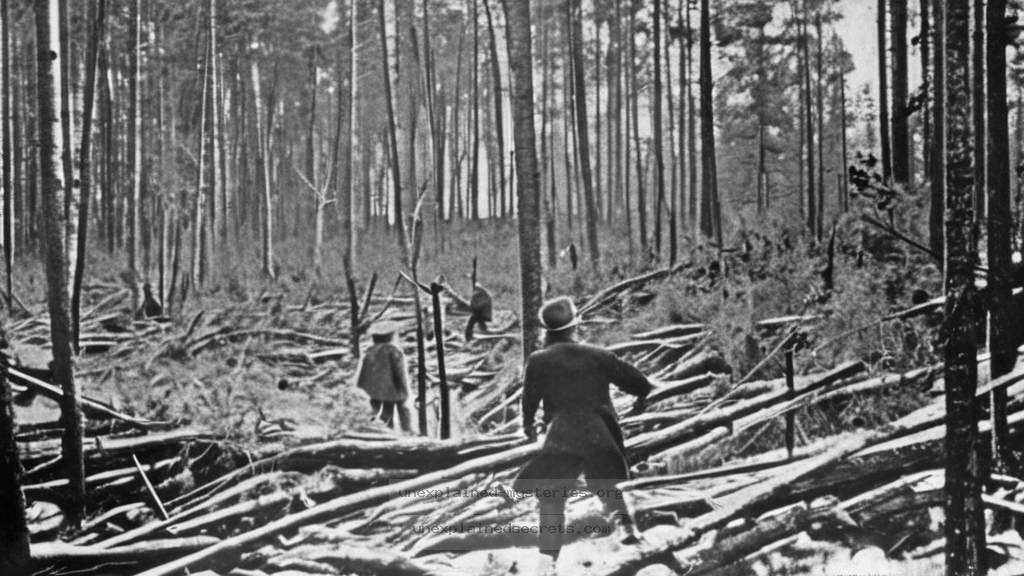What Causes the Mysterious Tunguska Event of 1908 and Why Is It Still Unexplained?
What Causes the Mysterious Tunguska Event of 1908 and Why Is It Still Unexplained?
The Tunguska Event remains one of the most intriguing mysteries in the realm of scientific anomalies. On the morning of June 30, 1908, a massive explosion occurred over the remote Siberian forest near the Tunguska River, flattening an estimated 2,000 square kilometers of trees. Despite extensive research, the exact cause of this event has never been conclusively determined, leading to various theories and speculations. Understanding the Tunguska Event not only provides insight into potential extraterrestrial phenomena but also into the vulnerabilities of our planet to cosmic events. This investigation continues to matter today as it raises questions about planetary defense and how we can prepare for similar occurrences in the future. Let’s delve deeper into this scientific enigma.
Historical Context of the Tunguska Event
Before we explore the mystery itself, it’s essential to consider the historical context. The Tunguska Event occurred in a time when the world was still grappling with the implications of modern science. The early 20th century was marked by significant advancements in physics and astronomy, yet many natural phenomena remained poorly understood. Eyewitness accounts from the local Evenki population, as well as Russian settlers, describe a bright fireball and a series of massive explosions that could be heard hundreds of kilometers away. The lack of immediate scientific investigation, combined with the remote location, meant that the event was largely ignored for decades. It wasn’t until the 1920s that Soviet scientists, led by Leonid Kulik, began serious explorations of the site, uncovering evidence that would lead to multiple theories regarding the explosion’s cause.
Core Concepts and Theories Behind the Event
Several theories have been proposed to explain the Tunguska Event, ranging from natural to extraterrestrial origins. The most widely accepted hypothesis suggests that a meteoroid or comet exploded in the atmosphere, releasing energy equivalent to around 10-15 megatons of TNT. This hypothesis is supported by the absence of a crater, which would be expected from a large impact. However, the idea of an airburst has its challenges, particularly when considering the size and speed of the object that would need to have entered Earth’s atmosphere to create such a massive explosion.
Other theories include:
- Nuclear Explosion: Some have speculated that an experimental nuclear device might have caused the explosion, but this has been widely dismissed due to the absence of radioactive materials in the area.
- Natural Gas Explosion: The release of natural gas from underground deposits has also been suggested, but there’s little evidence to support this theory.
- Earthquake or Volcanic Activity: Given the region’s seismic activity, some have proposed that geological forces could have contributed to the explosion, though the evidence does not strongly support this.
Practical Evidence and Observations
Investigations of the Tunguska site have yielded remarkable insights. The most significant findings include the radial pattern of fallen trees, which fan out from a central point, pointing towards the airburst hypothesis. Additionally, scientists discovered that the trees were scorched and burned, consistent with a massive shockwave rather than a direct impact. The analysis of soil and vegetation showed no signs of significant impact materials, further supporting the airburst theory.
Alternative Perspectives on the Tunguska Event
While the meteoric impact theory is the most widely accepted explanation, alternative perspectives continue to generate discussion. Some researchers posit that the event could have been a result of a collision with an asteroid rich in organic materials, suggesting that the explosion could have released not only energy but also biological materials into the Earth’s atmosphere. This theory opens a fascinating avenue for discussions about panspermia—the hypothesis that life exists throughout the universe and is distributed by meteorites, asteroids, comets, and planetoids.
Another alternative perspective involves the possibility of a mini black hole passing through Earth’s atmosphere, although this theory is less supported due to the lack of observational evidence. However, it does highlight the creative thinking that surrounds the Tunguska Event, as scientists continue to explore the edges of known physics.
Common Misconceptions and Clarifications
Despite extensive research, many misconceptions about the Tunguska Event persist. One common myth is that the explosion was an atomic bomb test, which has been debunked multiple times due to the absence of radioactive materials. Another misconception is that the event was a meteor impact, which fails to account for the lack of a crater. Education about these myths is essential for promoting a clearer understanding of the event and its implications.
Best Practices for Investigation and Study
When investigating events like the Tunguska Event, scientists employ various methodologies, including remote sensing, geological surveys, and analysis of meteorological data. Best practices include a multidisciplinary approach that combines insights from geology, astronomy, and atmospheric sciences. It’s also crucial to utilize modern technology, such as satellite imagery and computer simulations, to better understand the dynamics of such explosions.
Fieldwork remains invaluable; revisiting the Tunguska site with current scientific tools could yield new insights. Collaborations between international scientists can enhance the scope of research, allowing for a more comprehensive understanding of the implications of the event.
Future Developments and Ongoing Research
The Tunguska Event serves as a reminder of the potential hazards posed by cosmic objects. Ongoing research into near-Earth objects (NEOs) aims to enhance our understanding of the risks associated with asteroid impacts. Organizations like NASA and ESA are actively developing planetary defense strategies to mitigate such risks. Furthermore, scientists continue to study historical cosmic events to identify patterns that could inform future predictions.
Advancements in observational technology, such as the use of powerful telescopes and advanced computational models, are paving the way for deeper insights into cosmic events. Future explorations may also benefit from collaborative efforts with space agencies and research institutions worldwide.
Conclusion: The Tunguska Event as a Portal to Understanding Cosmic Hazards
The Tunguska Event remains an unsolved mystery that captures the imagination of scientists and enthusiasts alike. From the explosive theories that attempt to explain its cause to the implications for planetary defense, the event continues to prompt important questions about our universe and our place within it. As researchers utilize modern technology and collaborative efforts to study this phenomenon, we inch closer to understanding not just the Tunguska Event but also the broader implications of cosmic threats.
Other Articles
Recent Posts
- What Happened to Flight MH370? The Conspiracy Theories That Still Haunt Us
- What Secrets Lurk Within the Walls of the Infamous Trans-Allegheny Lunatic Asylum?
- What Evidence Supports the Existence of Bigfoot in the Pacific Northwest?
- What Happened to the Indus Valley Civilization? Unraveling the Mysteries of Ancient Urban Life
- Can Telepathy Be Scientifically Proven Through Laboratory Evidence?







